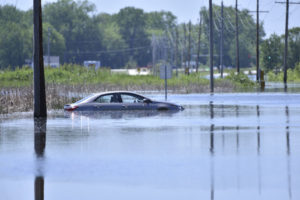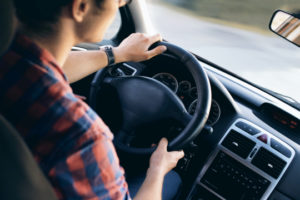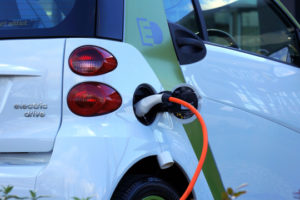Embarking on a road trip is always an adventure that promises freedom, discovery, and the thrill of the open road. Whether you’re planning a weekend getaway or a cross-country expedition, making sure you’re bringing the essentials is key to ensuring a smooth and enjoyable journey. Today, let’s talk about packing for a road trip and what to bring so you can make the most of your vacation.
Remember the Essentials
 First and foremost, don’t forget your driver’s license, vehicle registration, insurance information, and any travel permits you may need. Additionally, carry a physical copy of your route, emergency contacts, and addresses of your destination(s).
First and foremost, don’t forget your driver’s license, vehicle registration, insurance information, and any travel permits you may need. Additionally, carry a physical copy of your route, emergency contacts, and addresses of your destination(s).
Although the items below aren’t necessarily ‘fun,’ they’re important to have so you can stay both safe and comfortable in case you need them.
- First Aid Kit: Bumps and bruises happen, so a well-stocked first aid kit is a must. Make sure that your first aid kit is up-to-date (medicines do expire, after all), and include bandages, pain relievers, and antiseptic wipes and/or hand sanitizer.
- Emergency Tools: A flashlight with extra batteries, jumper cables, a tire pressure gauge, and a toolkit are all essential in case you run into an unforeseen issue.
- Spare Tire and Jack: If you have a spare tire, make sure that it is in good condition and filled to the correct PSI for the season. Also, check that you have the tools needed to change a flat and brush up on your tire-changing skills before you go.
- Snacks and Water: Make sure you bring non-perishable snacks such as trail mix and granola bars, as well as extra bottles of water. These can come in handy if you wind up stuck in traffic or on the side of the road.
- Car Chargers: Bring car chargers for phones, cameras, and other electronic gadgets to help you stay online and connected wherever the road takes you.
- Travel Pillows and Blankets: Whether you want to catch a quick nap during a rest stop or you’ve run into car trouble and have to wait for help, a comfortable pillow and blanket can make a world of difference for your comfort.
- GPS or Navigation Apps: Although most modern vehicles have built-in GPS, having a backup navigation system through your smartphone is wise. Similarly, technology can fail, so having a paper map of your route can help ensure you don’t get lost if you leave cell reception.
- Cooler: A portable plug-in cooler is perfect for keeping drinks and snacks fresh, especially if you are going to be on the road for several days. Consider packing a mix of healthy options and indulgent treats.
Clothing and Personal Items
 Before you go, check the weather forecast for your route and destination. Packing clothing that can be layered can help you be prepared for changing temperatures. If your road trip spans several days, having a small amount of detergent on hand makes it easy to do laundry on the go.
Before you go, check the weather forecast for your route and destination. Packing clothing that can be layered can help you be prepared for changing temperatures. If your road trip spans several days, having a small amount of detergent on hand makes it easy to do laundry on the go.
Don’t forget your toothbrush, toothpaste, shampoo, and other personal hygiene items are essential for staying fresh on the road. Also, make sure to bring your prescription medication. It’s wise to bring more than you need – accidents happen, and pills sometimes fall down the sink or in an area you can’t reach.
If you’re planning to spend time outdoors, bring sunscreen and bug spray to protect yourself from the sun’s rays and pesky insects. You may also want to invest in UV or bug-protective clothing, especially if you’re sensitive to the sun or bug bites.
Stay Entertained on the Road
A curated road trip playlist, podcasts, or audiobooks are ideal hands-free entertainment for long road trips. Road trip games like “I Spy” and trivia are classics.
If you’re traveling with children, consider downloading a movie or their favorite TV show to keep them entertained. Handheld game devices or games on their phone can also stave off boredom.
Although most smartphones have cameras, a dedicated, disposable camera can capture travel memories in a unique way.
Prepare Your Car For The Road With T3 Atlanta
Whether you’re exploring scenic landscapes, historic sites, or vibrant cities, being well-prepared allows you to focus on the joy of the journey itself.
A successful vacation begins with carefully packing for a road trip, but being prepared should also include your vehicle. Bring your car to T3 Atlanta before your trip to help ensure your ride is in top shape wherever the road may take you. Give us a call to make an appointment today!
 1. Inspect The Visible Damage
1. Inspect The Visible Damage 5. Have Your Car Towed For Inspection
5. Have Your Car Towed For Inspection Take a Moment to Evaluate the Situation and Survey the Damage
Take a Moment to Evaluate the Situation and Survey the Damage Spin your Wheels
Spin your Wheels What to do if you encounter flood waters while driving
What to do if you encounter flood waters while driving Can you avoid getting stuck in floodwaters?
Can you avoid getting stuck in floodwaters? What Is Car Sickness and What Causes It?
What Is Car Sickness and What Causes It? 5 Ways to Prevent Car Sickness
5 Ways to Prevent Car Sickness 1. Awareness
1. Awareness 4. Patience and Courtesy on the Road
4. Patience and Courtesy on the Road What are EVs or Electric Vehicles?
What are EVs or Electric Vehicles? What things should you prepare before taking a road trip in an EV?
What things should you prepare before taking a road trip in an EV? Why should you put snow chains on your tires?
Why should you put snow chains on your tires? Other winter driving essentials to keep in your car
Other winter driving essentials to keep in your car Drive-ins don’t just operate in perfect weather; they’ll be open rain or shine. All the same, it’s a good idea to look at the weather report before you go and plan accordingly.
Drive-ins don’t just operate in perfect weather; they’ll be open rain or shine. All the same, it’s a good idea to look at the weather report before you go and plan accordingly. You can get concessions at the drive-in, but to save costs and also enjoy your favorite treats, you can also bring your own. Since you can’t have your car’s cabin lights on during the show, it’s best to pack food and drink that you can easily grab in the dark.
You can get concessions at the drive-in, but to save costs and also enjoy your favorite treats, you can also bring your own. Since you can’t have your car’s cabin lights on during the show, it’s best to pack food and drink that you can easily grab in the dark. You and your fellow drivers are at the drive-in for one purpose: to enjoy a movie. Since you’re in your car and not in a theatre, it’s important to practice drive-in etiquette and not distract others from their viewing experience.
You and your fellow drivers are at the drive-in for one purpose: to enjoy a movie. Since you’re in your car and not in a theatre, it’s important to practice drive-in etiquette and not distract others from their viewing experience. Before we discuss what to look for in a child safety seat, let’s talk about the rules and regulations about these seats in Georgia since a safety seat may not be necessary for your child.
Before we discuss what to look for in a child safety seat, let’s talk about the rules and regulations about these seats in Georgia since a safety seat may not be necessary for your child. The answer to this question depends on the age and size of your child and will change over time as your child grows. You can find a comprehensive seat check guide and the closest seat inspection station near you at the
The answer to this question depends on the age and size of your child and will change over time as your child grows. You can find a comprehensive seat check guide and the closest seat inspection station near you at the 







